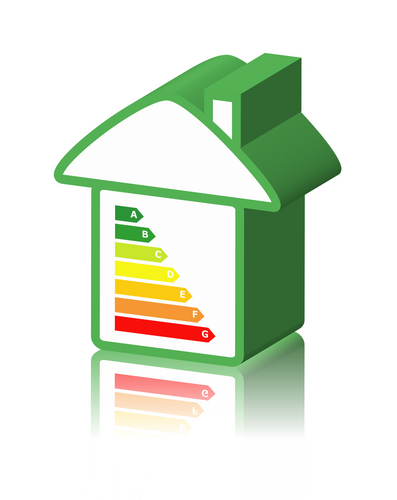By Carolyn Goldthwaite | Wed, April 3, 13
Testifying in front of the Boston City Hall Council is a lot like speed dating - at least from what I know of speed dating. I've never had the occasion or desire to try speed dating, but after appearing before the Council recently, I think I now have a good idea of what it might be like. Last week I submitted written testimony and on Thursday had the opportunity - one entire minute - to stand before Chairman Matt O’Malley of the Council’s Government Operations Committee to tell him why the proposed Building Energy Reporting Ordinance would be an energy, economic and environmental policy win for the city of Boston.
In my minute I quickly tried to counter some of the opposing arguments that were voiced earlier that afternoon, particularly from the city’s real estate trade groups and from Harvard Professor Robert Stavins, who claimed that there were no benefits resulting from requiring building owners to report and disclose their energy use. What Prof. Stavins conveniently fails to mention are the many commercial real estate studies that have been done, including analysis from Co-Star, the commercial real estate information research service, Jones Lang LaSalle and Lawrence Berkeley National Labs, among others, that illustrate the positive market impact on energy performance of building labeling and disclosure. A sampling of these includes:
Last week I submitted written testimony and on Thursday had the opportunity - one entire minute - to stand before Chairman Matt O’Malley of the Council’s Government Operations Committee to tell him why the proposed Building Energy Reporting Ordinance would be an energy, economic and environmental policy win for the city of Boston.
In my minute I quickly tried to counter some of the opposing arguments that were voiced earlier that afternoon, particularly from the city’s real estate trade groups and from Harvard Professor Robert Stavins, who claimed that there were no benefits resulting from requiring building owners to report and disclose their energy use. What Prof. Stavins conveniently fails to mention are the many commercial real estate studies that have been done, including analysis from Co-Star, the commercial real estate information research service, Jones Lang LaSalle and Lawrence Berkeley National Labs, among others, that illustrate the positive market impact on energy performance of building labeling and disclosure. A sampling of these includes:
 Last week I submitted written testimony and on Thursday had the opportunity - one entire minute - to stand before Chairman Matt O’Malley of the Council’s Government Operations Committee to tell him why the proposed Building Energy Reporting Ordinance would be an energy, economic and environmental policy win for the city of Boston.
In my minute I quickly tried to counter some of the opposing arguments that were voiced earlier that afternoon, particularly from the city’s real estate trade groups and from Harvard Professor Robert Stavins, who claimed that there were no benefits resulting from requiring building owners to report and disclose their energy use. What Prof. Stavins conveniently fails to mention are the many commercial real estate studies that have been done, including analysis from Co-Star, the commercial real estate information research service, Jones Lang LaSalle and Lawrence Berkeley National Labs, among others, that illustrate the positive market impact on energy performance of building labeling and disclosure. A sampling of these includes:
Last week I submitted written testimony and on Thursday had the opportunity - one entire minute - to stand before Chairman Matt O’Malley of the Council’s Government Operations Committee to tell him why the proposed Building Energy Reporting Ordinance would be an energy, economic and environmental policy win for the city of Boston.
In my minute I quickly tried to counter some of the opposing arguments that were voiced earlier that afternoon, particularly from the city’s real estate trade groups and from Harvard Professor Robert Stavins, who claimed that there were no benefits resulting from requiring building owners to report and disclose their energy use. What Prof. Stavins conveniently fails to mention are the many commercial real estate studies that have been done, including analysis from Co-Star, the commercial real estate information research service, Jones Lang LaSalle and Lawrence Berkeley National Labs, among others, that illustrate the positive market impact on energy performance of building labeling and disclosure. A sampling of these includes:
- A 2012 analysis by the U.S. Environmental Protection Agency (EPA) of 35,000 benchmarked buildings found that energy consumption in those buildings decreased by an average of 7 percent from 2008 to 2011.
- A Lawrence Berkeley National Laboratory 2011 policy brief that cites five different studies indicating a higher sale values for residential and commercial properties with energy efficiency or “green” labels.
- A recent report commissioned by the California Public Utilities Commission found that benchmarking was highly correlated with building energy improvements and management actions, and was a strong catalyst for customer participation in utility rebate and incentive programs.
- EPA data that shows that $1 in energy efficiency can add up to $3 in asset value for a commercial building.
- Results from early adopters such as Austin, TX and New York City reveal that property owners are reaping higher rents and resale values for energy efficient buildings.
- Energy efficiency investments create real jobs. A study by the Center for Progress showed that $1 million invested in energy efficiency created 16.7 local jobs.
- A recent study of building owners by ACEEE revealed that more than half of the property owners used or expect to use benchmarking activities to market their buildings and that tenants are increasingly seeking to lease only rated buildings.
